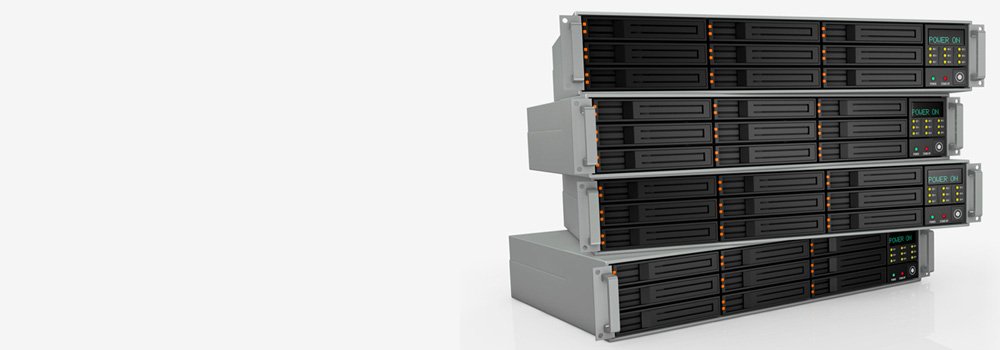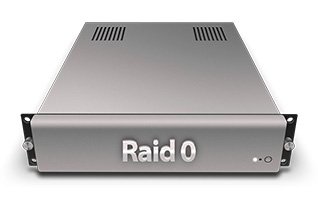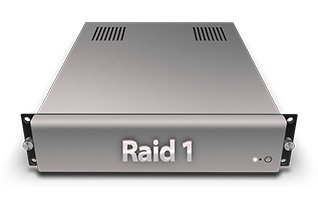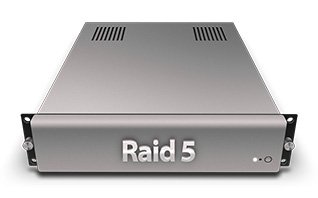Raid Array Data Recovery
We deliver engineering-grade recovery for software & hardware RAIDs, NAS, SAN/DAS, and rack servers—2-disk mirrors through 32-disk arrays. Clients include home users, SMEs, enterprises, and public sector. Free diagnostics and clear options before work begins.
Send-in: Label each drive’s slot/position, place in anti-static bags, cushion well in a padded envelope or small box, include contact details, and post or drop off. We always work from write-blocked clones, never originals.
Top NAS brands in the UK (representative popular models)
-
Synology – DiskStation DS224+, DS423+, DS723+, DS923+, DS1522+; RackStation RS1221+, RS3621xs+
-
QNAP – TS-464, TS-473A, TS-873A, TVS-h674, TS-431K; rack TS-x53DU, TS-x73AU
-
Western Digital (WD) – My Cloud EX2 Ultra, EX4100, PR4100, DL2100
-
Seagate/LaCie – LaCie 2big/6big/12big, Seagate IronWolf NAS enclosures
-
Buffalo – TeraStation 3420/5420/6420, LinkStation 220/520
-
NETGEAR – ReadyNAS RN424, RN524X, RN628X
-
TerraMaster – F2-423, F4-423, F5-422, U-series rack
-
ASUSTOR – AS5304T, AS6604T, LOCKERSTOR 4/8
-
Drobo (legacy) – 5N2, B810n
-
Thecus – N5810PRO, N7710-G
-
iXsystems – TrueNAS Mini X/XL, R-series (FreeNAS/TrueNAS based)
-
LenovoEMC (legacy) – ix2, ix4, px4
-
Zyxel – NAS542, NAS326
-
D-Link – DNS-320L, DNS-340L
-
Promise – VTrak/Vess NAS
-
Ugreen – consumer NAS ranges (newer)
-
OWC – Jellyfish (Pro NAS)
-
QSAN – XN3002T/XN5004T
-
Infortrend – EonNAS
-
HPE StoreEasy – 1460/1660/1860 (Windows NAS)
(Models representative; we recover all families and capacities.)
Top RAID server / rack platforms (representative)
-
Dell EMC PowerEdge – R540/R640/R650/R750, T440/T640
-
HPE ProLiant – DL360/DL380 Gen10/Gen11, ML350, DL325
-
Lenovo ThinkSystem – SR630/SR650, ST550
-
Supermicro SuperServer – 1029/2029/AS-series
-
Fujitsu PRIMERGY – RX2540, TX2550
-
Cisco UCS C-Series – C220/C240
-
NetApp FAS/AFF – FAS27xx/A2xx (LUN exports)
-
Dell EMC PowerVault – ME4012/ME4024/ME4084 (DAS/SAN)
-
Infortrend EonStor – GS/GX/Gene
-
Promise VTrak – E-class, J-class JBODs
-
Areca – ARC-1883/1886 series controllers
-
Adaptec by Microchip – ASR-71605/71685/8405/8805
-
QNAP Enterprise – TS-h1277XU/TS-x83XU
-
Synology RackStation – RS4021xs+, RS1221+
-
IBM/Lenovo (legacy) – x3650, M-series with ServeRAID
Professional RAID recovery workflow (what we actually do)
-
Forensic intake & label verification – record serials, order, enclosure/controller, filesystem/LUN layout.
-
Clone every member first – hardware imagers (PC-3000, DDI, Atola) with unstable-media profiles (head-select, zone priority, reverse passes, adaptive timeouts).
-
Controller/metadata capture – export foreign configs (LSI/Adaptec/Areca), mdadm/LVM superblocks, ZFS labels, Synology DSM/QNAP md/LVM layers.
-
Virtual array reconstruction – discover stripe size, parity rotation, disk order, start offsets, 512e/4Kn sector size, any write-hole patterns; build a virtual RAID from the clones.
-
Filesystem/LUN repair on the virtual image – NTFS/ReFS, APFS/HFS+, EXT/XFS/ZFS/Btrfs; journal replay, B-tree & bitmap repair, orphan grafting; no writes to members.
-
RAID with encryption – BitLocker/FileVault/LUKS/SED: decrypt using valid keys on the virtual image; otherwise salvage plaintext remnants.
-
Verification & delivery – SHA-256 manifests, sample-open testing (DB/video/mail), secure handover.
Top 75 RAID errors we recover (and how)
Core assembly & configuration
-
Unknown disk order → parity analysis on stripes to infer order; verify with signature checks.
-
Unknown stripe size → entropy/CRC tests over 16–1024 KB candidates; confirm against file headers.
-
Wrong start offset → detect filesystem superblock/GPT alignment; adjust member offsets.
-
Mixed sector sizes (512e/4Kn) → normalise during virtual build; remap logical block addressing.
-
Foreign configuration conflicts → dump all controller metadata; select last consistent epoch; ignore stale sets.
-
Stale/partial rebuild metadata → roll back to pre-rebuild epoch; exclude degraded writes.
-
Accidental array re-initialisation → ignore new headers; reconstruct from deep scan of old parity/metadata; mount virtually.
-
Accidental disk reorder during maintenance → parity-validation to restore order; test montage on small windows before full.
-
Parity rotation schema unknown → profile (RAID-5 left-asymmetric/right-symmetric; RAID-6 P+Q rows) via parity math.
-
Inconsistent stripe unit per member → detect by misaligned headers; rebuild with corrected unit size.
Member/media failures
-
Single-disk failure in RAID-5 → clone all members; compute missing stripe via parity; export.
-
Dual-disk failure in RAID-6 → clone; solve P/Q equations; recover stripes; export.
-
Multiple member read instabilities → per-head cloning on weak HDDs; error map merges; fill holes from parity.
-
Unreadable sectors on parity member → compute from data disks; mark map.
-
Head crash on one member → donor HSA swap; minimal SA work; clone readable ranges; rest from parity.
-
Translator corruption on HDD member → rebuild translator; clone; parity completes holes.
-
SSD wear-out in RAID-10 → ECC-tuned imaging; prefer surviving mirror; re-mirror virtually.
-
NVMe namespace drop → admin commands enumerate; clone namespace directly.
Controller/firmware faults
-
LSI/Avago firmware bug (cache write-back loss) → detect incomplete stripes; roll back with journal/FS log.
-
Cache battery failure (BBU) leading to write hole → locate inconsistent stripes; reconstruct via filesystem journal and parity consensus.
-
Adaptec “degraded good” member → force offline copy in virtual set; ignore controller’s stale mark.
-
Areca metadata mismatch → extract binary headers; pick consistent generation; rebuild virtually.
-
Intel RST fakeraid confusion → import metadata; rebuild as mdadm-compatible virtual RAID.
-
Promise/VTrak write journal loss → parity verify; use FS intent logs for correction.
Rebuild & migration issues
-
Rebuild halted with UREs → image failing member with tiny blocks; parity repair missing sectors.
-
Capacity-mismatched replacement → trim virtual member to common size; rebuild above min-size.
-
Expand/reshape interrupted → locate old/new metadata; roll back to last consistent map; export.
-
Stripe size changed mid-life → segment array history; export from stable epoch(s).
-
Bad sector reallocation during rebuild → image before reallocation; remap in virtual RAID.
Filesystem & LUN corruption on RAID
-
NTFS $MFT damage on RAID-5 → reconstruct $MFT using $MFTMirr; replay $LogFile; recover.
-
ReFS metadata errors → use CoW snapshots to roll back; salvage from shadow copies.
-
EXT/XFS journal replays → mount readonly; xfs_repair with logzero if needed.
-
ZFS pool with missing vdev → import readonly, use
zdbto map blocks; copy files (partial if needed). -
Btrfs RAID1/10 in NAS → btrfs-restore from good copy of chunks; heal references.
-
APFS on RAID LUN → object map/spacemap rebuild on the LUN image; snapshot export.
-
HFS+ catalog/extent B-tree damage → rebuild trees; graft orphans.
NAS-specific stack problems
-
Synology DSM mdadm/LVM layers damaged → reconstruct md arrays; reassemble LVM; mount ext4/btrfs; export.
-
QNAP mdraid + LVM2 → same as above; handle legacy EXT3/4 + thin LVM.
-
XFS on mdraid (older NETGEAR) → xfs_repair on the LUN clone; export data.
-
Btrfs metadata duplication in Synology → use surviving mirror metadata to restore tree root; recover.
-
“System volume degraded” after DSM update → discard new config on virtual; mount previous epoch.
Partitioning / sector geometry
-
GPT headers overwritten → rebuild from secondary GPT + FS signatures.
-
Hybrid MBR/GPT mismatches → normalize to GPT; correct LUN boundaries.
-
512e vs 4Kn sector mismatch after migration → translate during virtual assembly.
Encryption on top of RAID
-
BitLocker over RAID → require recovery key; decrypt LUN image; then rebuild FS.
-
LUKS/dm-crypt on mdadm → use header/backup header; PBKDF; decrypt; mount.
-
SED at array level → unlock via controller; if unavailable, keys required; otherwise carve plaintext residues.
Accidental/administrative errors
-
Deleted RAID set → deep scan members for previous metadata; reconstruct last coherent array.
-
Quick-initialized array → ignore new headers; recover from old stripe map.
-
Accidental “create single disk” on member → member still has old data; virtualize back into set.
-
Hot-spare promoted incorrectly → identify promotion point; restore correct order.
Performance/IO anomalies that cause loss
-
Link instability (SAS/SATA CRCs) → rehost to stable backplane; clone; rebuild virtually.
-
Expander misrouting → audit enclosure map; correct path; re-image.
-
Backplane power brownouts → bench PSU; image under stable rails.
Virtualisation & datastore on RAID
-
VMFS datastore header damage → rebuild VMFS structures; stitch VMDKs.
-
Hyper-V CSV corruption → repair NTFS/ReFS; consolidate AVHDX chain.
-
VHDX/VMDK snapshot chain broken → map parents; fix grain tables/BAT; mount child.
-
Thin-provision & zero-fill confusion → honour allocation maps; ignore unallocated noise.
-
RDM/iSCSI LUN loss → rebuild target mapping; mount extents.
Advanced parity anomalies
-
Write-hole stripes (RAID-5) → use FS logs to choose correct version per stripe.
-
Dual parity mismatch (RAID-6) → recompute Q with Galois field ops; validate via headers.
-
Rotating parity with missing last drive → infer rotation by majority vote across stripes.
Edge cases & legacy
-
Dynamic Disks (Windows) spanning → rebuild LDM metadata; re-join extents.
-
Apple SoftRAID/RAID-0/1 → parse Apple RAID headers; virtual assemble.
-
NetApp WAFL LUN inside RAID → recover LUN, then filesystem within.
-
Extents truncated at array end → export partials with integrity notes.
-
Controller foreign import overwrote headers → salvage from clone of members; rebuild manually.
-
Battery-backed cache lost data after power cut → preference to journal-consistent epoch.
-
Sector remap storms during rebuild → halt rebuild; image members; reconstruct virtually.
-
NAS expansion added different-size drives → logical min-size virtual array; export.
-
Volume group metadata missing (LVM) → scan PV headers; re-create VG; mount LVs readonly.
-
mdadm superblock version conflicts → pick consistent superblock set; ignore mismatched.
-
Btrfs scrub aborted mid-repair → mount degraded; use btrfs restore; copy.
-
ZFS resilver interrupted → import readonly; copy healthy files; note gaps.
-
Parity disk physically OK but logical stale → exclude stale member from parity math.
Top 20 problems with virtual RAID / storage stacks (and our approach)
-
VMFS header loss on RAID LUN → rebuild VMFS; re-index VMDKs.
-
Corrupt VMDK descriptor + intact flat → regenerate descriptor; mount.
-
Broken VHDX chain (Hyper-V) → reconstruct parent links; merge diffs.
-
ReFS CSV metadata damage → roll back via shadow copies; CoW map validate.
-
Thin-provision overcommit → export allocated blocks only; warn on sparse gaps.
-
iSCSI target table loss → recover targets from config backups; remount LUNs.
-
NFS export corruption (NAS) → bypass NFS; mount underlying volume on clone.
-
LVM thin pool metadata loss → rebuild from pool metadata recovery; export LVs.
-
Docker/Container volumes on RAID → recover overlay2 layers; rebuild volumes.
-
Ceph/Gluster bricks on mdadm → export object/chunk data; rehydrate.
-
KVM qcow2 mapping damage → fix L1/L2 tables; convert to raw.
-
Snapshots filled the datastore → delete broken snapshots on clone; consolidate.
-
SR-IOV/iSCSI offload bugs → rehost storage; image; repair on clone.
-
RDM pointer loss → rebuild mapping; mount physical LUN image.
-
Xen .vhd differencing chain issues → rebuild BAT/parent IDs; merge.
-
vSAN disk group fail (forensic export) → per-component extraction; limited salvage.
-
Proxmox ZFS pool degraded → import readonly; zdb map; copy.
-
TrueNAS/Bhyve images missing → search zvol snapshots; clone block devices.
-
VM encryption keys lost → require KMS/KEK; otherwise carve unencrypted caches only.
-
NDMP/backup appliance LUN loss → reconstruct catalog; restore to alternate target.
Why choose Sheffield Data Recovery
-
25+ years of RAID/NAS/Server recoveries across every major vendor and controller
-
Clone-first, controller-aware process (parity math, rotation analysis, stripe inference)
-
Advanced mechanical/firmware/FTL tooling for HDD, SSD, and NVMe members
-
Forensic discipline: write-blocked imaging, SHA-256 verification, documented results
-
Free diagnostics with evidence-based options before work begins
Ready to start? Package the disks safely (anti-static + padded envelope/small box, labelled by slot/order) and post or drop them in. Our RAID engineers will assess and present the fastest, safest path to your data.





